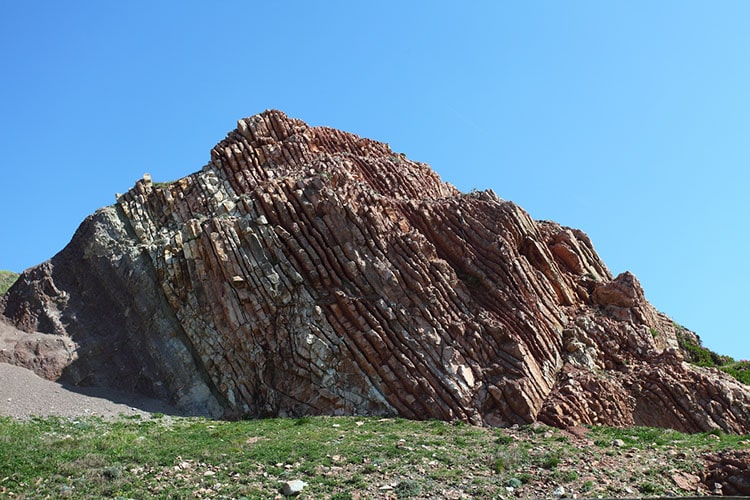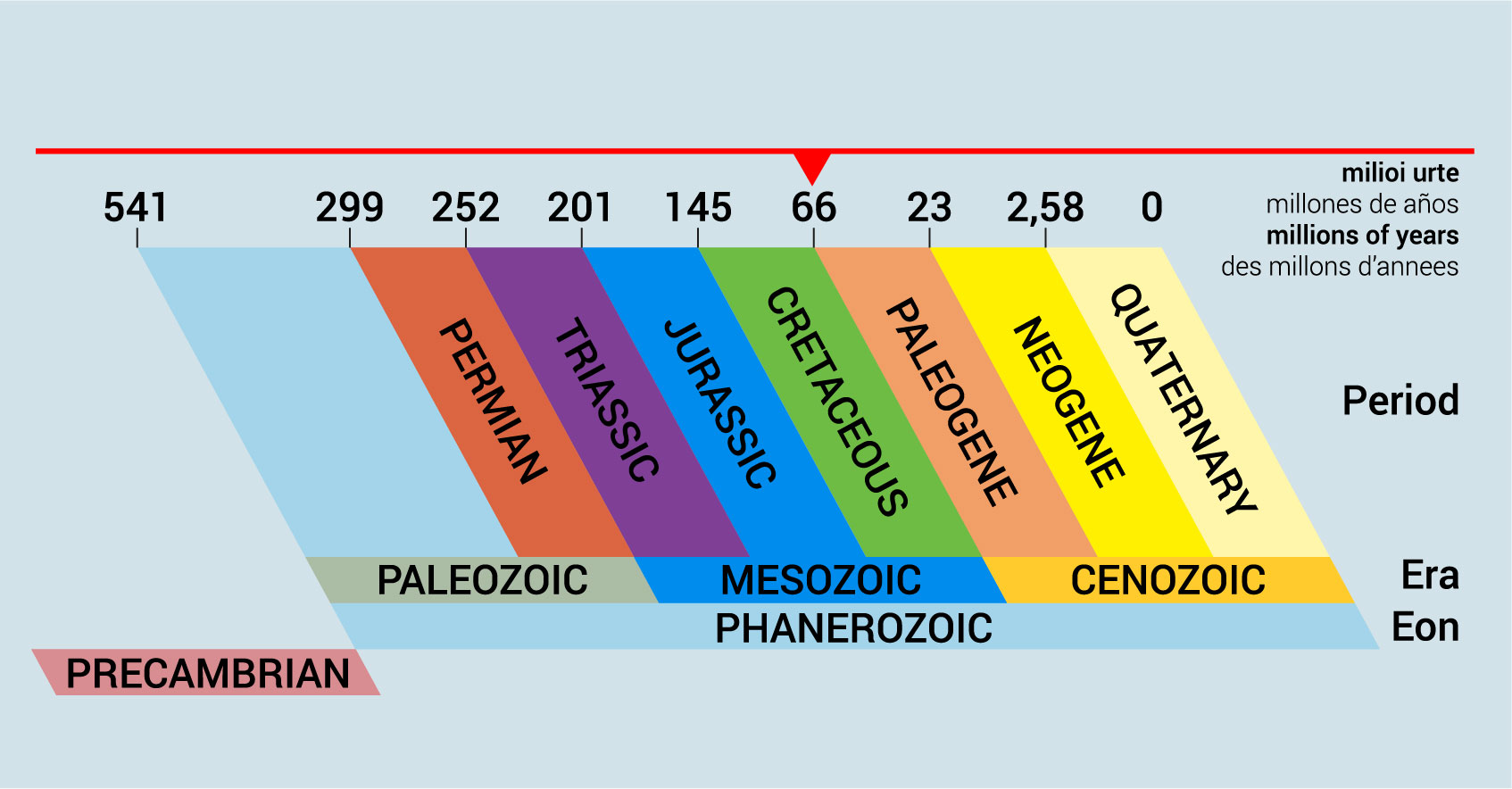SOPELA
THE METEORITE IMPACT CRATER
K-Pg BOUNDARY IN SOPELA
66 million years ago... A huge 10 km diameter meteorite plunged into what is now next to the Yucatan peninsula in Mexico. The Earth was covered in dust and ash, photosynthesis could no longer occur and the cold lasted decades. It caused the extinction of three quarters of the species living on the Earth at the time, like the ammonoids and dinosaurs.
What today is Sopela was covered by the sea back then. And 1000 metres underwater the remains of the marine animals that lived there, and even dust kicked up by the explosion of the meteorite in the Yucatan, were being deposited. After millions of years that sediment became the rocks that emerge from the sea.
The K-Pg boundary in Sopela; the impact of the meteorite
Near the Sopela trail between the Arriatera and Atxabiribil beaches you can see a thin layer of sediment that was formed exactly after the impact of the meteorite. It's called the K-Pg boundary (previously the K/T boundary), because it marks the boundary between two of the periods the history of the Earth is divided into: the Cretaceous (K from the German Kreidezeit) and the Tertiary period
Several teams from the University of the Basque Country are still working on research into the rocks in Sopela
DID YOU KNOW the place we are at is called Arrigorri? In Basque, “harri” means stone and “gorri” means red, which is for the colour that comes from the iron in the rocks; the marl is violet and the limestone is pink and grey.


